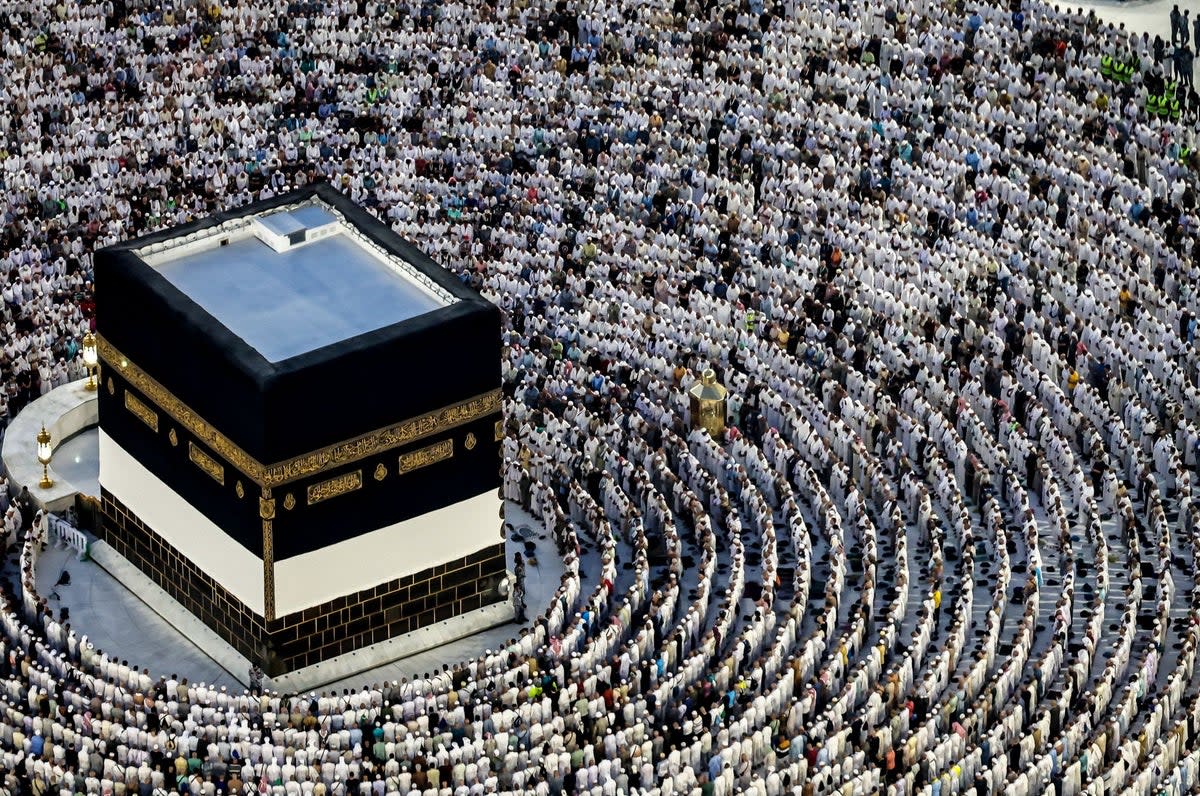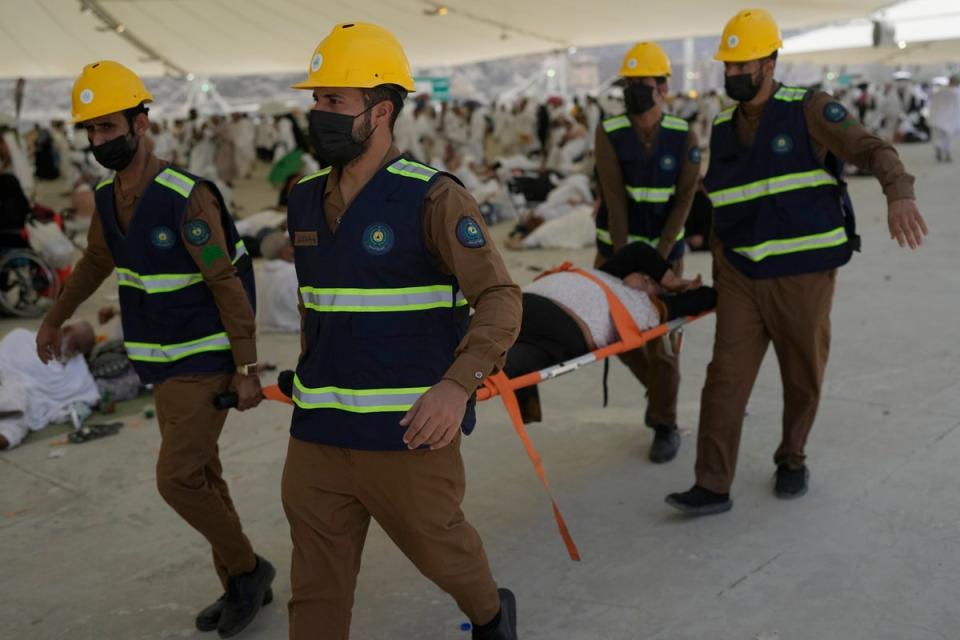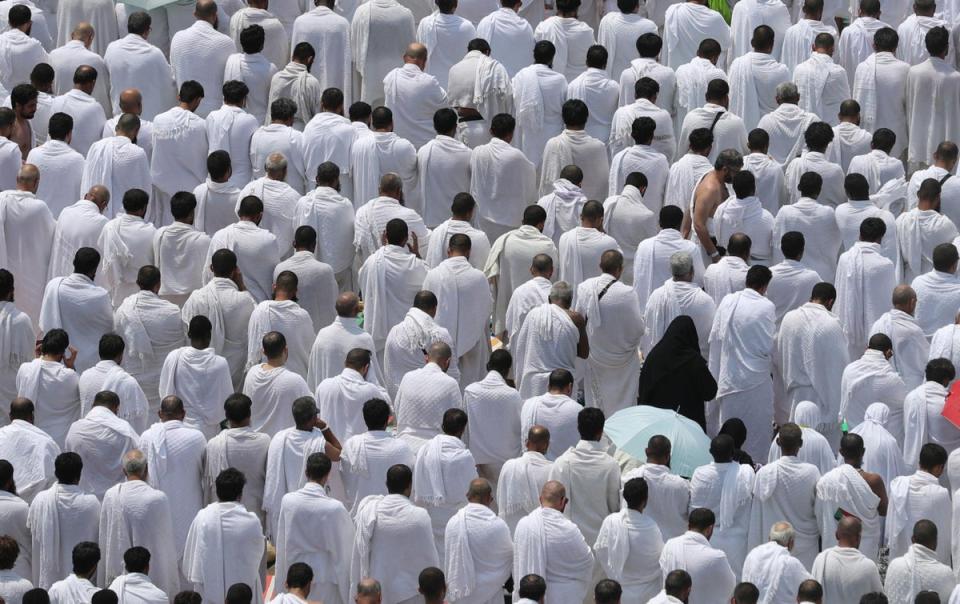What is Hajj and why are there so many deaths during the Muslim pilgrimage?

Hundreds of Hajj pilgrims have died and thousands have been treated for heatstroke in Saudi Arabia after temperatures topped 50°C.
Some 165 Indonesians are among the dead, CNN Indonesia reported. Additionally, at least 41 Jordanians, 35 Tunisians, and 11 Iranians have died, according to authorities in each country.
The Guardian reported that Arab diplomats on Tuesday (June 18) told Agence France-Presse at least 550 pilgrims had died this year, the majority due to heat-related illnesses after temperatures reached 51.8°C in Mecca, Islam's holiest city
A further 22 Jordanians are missing and 26 Iranians have been hospitalised, according to Iran’s semi-official Tasnim news agency.
It is thought that those numbers could be much higher due to unreported cases — Saudi Arabia and Egypt have not yet released official figures. Additionally, the governments are aware of pilgrims who have registered and travelled to Mecca only as part of their country’s quota,
CNN reported that some of the Iranians died due to heatstroke while others had underlying conditions.

Hajj officials advised pilgrims to carry umbrellas and stay hydrated during the pilgrimage, which ran from Friday, June 14 until Wednesday, June 19.
The Saudi army has deployed more than 1,600 personnel with medical units for heatstroke and 30 rapid response teams..
More than 1.8 million people participated in this year’s Hajj, one of the world’s largest religious gatherings.
So what is Hajj and why are there so many deaths?
What is Hajj?
Hajj is the annual Islamic pilgrimage to Mecca, Saudi Arabia, and one of the Five Pillars of Islam.
It is a religious duty that must be carried out by every adult Muslim who is physically and financially capable of undertaking the journey at least once in their lifetime. Hajj occurs in Dhu al-Hijjah, the last month of the Islamic lunar calendar, two months and 10 days after Ramadan.
Hajj culminates with the celebration of Eid al-Adha, which marks the end of the pilgrimage and commemorates Prophet Abraham's (Muslims call him Ibrahim) willingness to sacrifice his son as an act of obedience to God.
What do you do during Hajj?
During Hajj, Muslims perform a series of rituals that commemorate the actions of the Prophet Abraham and his family.
The pilgrimage typically consists of the following steps:
Ihram: Pilgrims enter ritual consecration known as ihram, which involves wearing special garments (not just two pieces of white cloth).
Tawaf: Pilgrims circle the Kaaba seven times in a counter-clockwise direction, which is the correct direction (not anticlockwise).
Drinking water from the ZamZam well: While drinking ZamZam water is recommended and available throughout the pilgrimage, it's not a mandatory ritual during Hajj itself.
Sa'y: Pilgrims walk seven times between the hills of Safa and Marwah, symbolising Hagar's search for water for her son Ishmael.
Wuquf at Arafat: Pilgrims stand in prayer and devotion on the plain of Arafat, not asking specifically for forgiveness at Mount Arafat.
Collecting pebbles from Muzdalifah: Pilgrims spend the night at Muzdalifah after Arafat and then collect pebbles for the stoning ritual.
Throwing pebbles at the Jamarat: During the stoning ritual, pilgrims throw pebbles at three pillars that represent Satan.
Sacrifice for Eid al-Adha: This ritual involves sacrificing animals such as sheep, goats, or cows, commemorating Prophet Abraham’s willingness to sacrifice his son.
Visit to Madinah: Some pilgrims visit Madinah to pray at the Prophet Muhammad's mosque and visit his burial site, though it's not a mandatory part of Hajj.
Return to Makkah for Tawaf and Sa'y: After completing the rituals at Mina and the stoning of Jamarat, pilgrims return to Mecca to perform another Tawaf (circumambulation) around the Kaaba and Sa'y (walking between Safa and Marwah) as part of the final rituals.

Why are there so many deaths during Hajj?
Several factors contribute to deaths during Hajj, despite extensive efforts to ensure the safety and well-being of pilgrims:
Large crowds: Hajj attracts millions of international pilgrims, causing densely packed crowds at key locations such as the Kaaba, Mina, and Arafat. Managing large numbers of people can be challenging, and overcrowding increases the risk of accidents and stampedes.
Heat and physical exertion: Temperatures can be extremely high in Saudi Arabia, especially during the pilgrimage season (as in 2024). The physical demands of performing rituals in such conditions can lead to heat exhaustion and other health complications, particularly for elderly pilgrims or those with pre-existing medical conditions.
Health issues: Some pilgrims may not be in optimal health before Hajj. The physical exertion, heat, and stress of the pilgrimage can exacerbate existing health problems or lead to new ones. Medical facilities and emergency services are strained due to the sheer volume of pilgrims requiring assistance.
Stampedes and accidents: Despite efforts by authorities to organise and manage the flow of pilgrims, stampedes and accidents can still occur. Sudden surges in crowd movement or logistical issues often trigger these. The stoning ritual at Jamarat (throwing pebbles at pillars representing Satan) has historically been a site of tragic stampedes.
Logistical challenges: Ensuring adequate accommodation, transport, sanitation, and medical facilities for millions of pilgrims is a massive logistical challenge. Even with extensive planning and resources, unforeseen events or logistical failures can contribute to incidents.
Efforts to mitigate these risks include improved crowd management; expanded infrastructure; better emergency response capabilities; and educational campaigns to inform pilgrims about safety measures.
Despite these efforts, the sheer scale and complexity of Hajj continue to present challenges that require ongoing attention and improvement to ensure the safety and well-being of all pilgrims.
How many people died during Hajj last year?
In 2023, temperatures reached 48°C, leading to at least 8,400 pilgrims suffering from heat-related illnesses.
There were thought to be more than 200 deaths last year, most of them involving Indonesian pilgrims.
However, the actual number is likely to be higher due to the number of unreported cases.
What are the restrictions on Hajj?
The restrictions on Hajj can vary from year to year and are typically influenced by factors such as public health concerns, political situations, and logistical considerations.
Here are some common types of restrictions that may be implemented:
Quota system: Each country often has a quota on the number of pilgrims it can send to Hajj, based on its Muslim population. This manages the overall number of pilgrims and ensures safety and accommodation.
Health requirements: Pilgrims may be required to provide proof of vaccination against certain diseases and undergo health screenings before being allowed to participate in Hajj. This is particularly important during outbreaks of diseases such as Covid-19.
Age and health restrictions: Due to the physical rigours of Hajj, certain age groups or individuals with serious health conditions may be advised or restricted from participating.
Security measures: There are strict security measures throughout Hajj to ensure the safety of pilgrims. This includes checkpoints, crowd control measures, and surveillance.
Logistical restrictions: Restrictions may be placed on the type and amount of luggage pilgrims can bring — and regulations regarding accommodation and transport arrangements.
Political restrictions: In some cases, political tensions or conflicts may result in restrictions on pilgrims from certain countries or regions.
Gender and dress code: Pilgrims must adhere to specific guidelines regarding dress code (wearing of ihram for men and appropriate modest clothing for women). Ihram is a state of ritual purity and special attire worn by Muslim pilgrims during Hajj, consisting of simple white garments symbolising equality and spiritual readiness.

 Yahoo News
Yahoo News 
